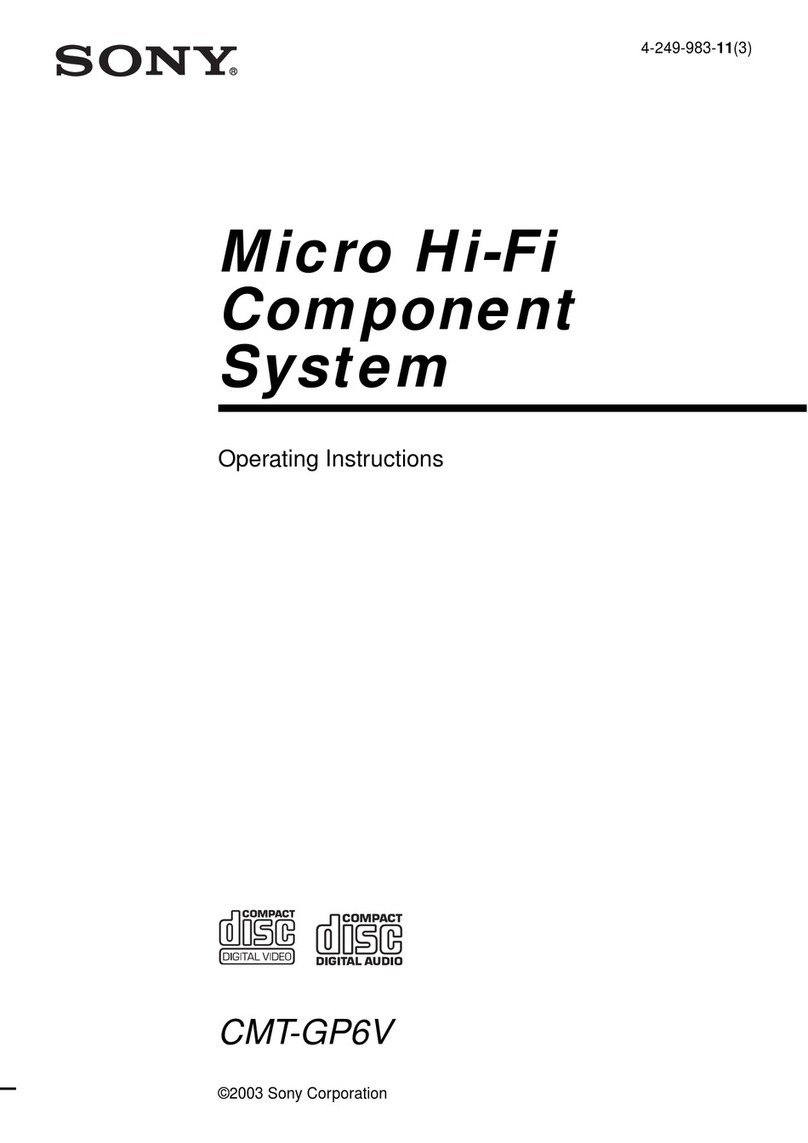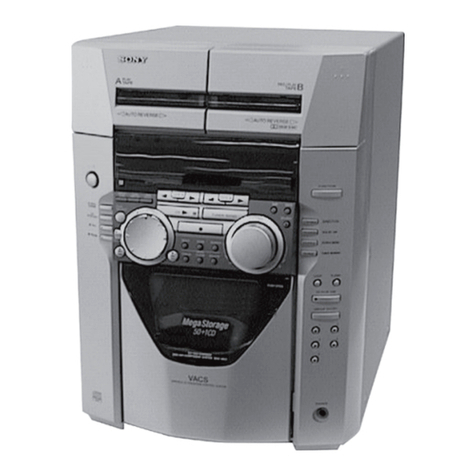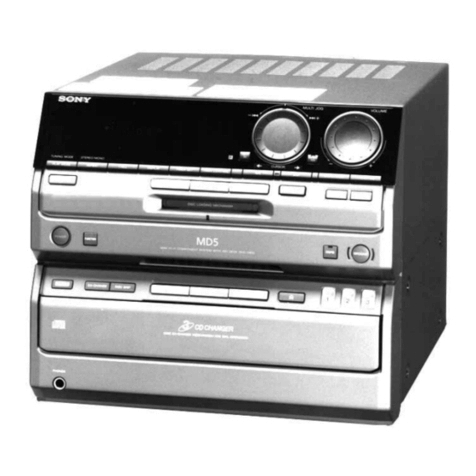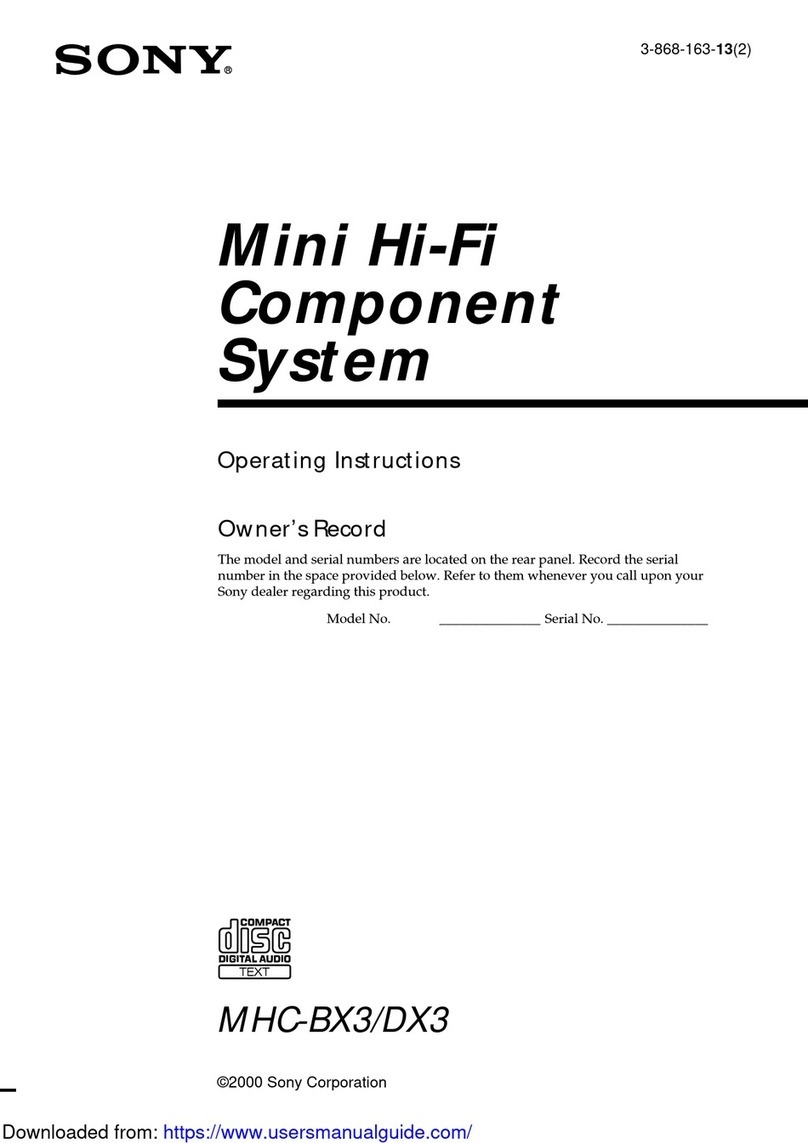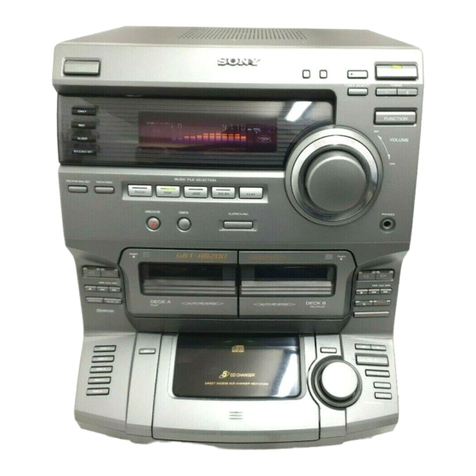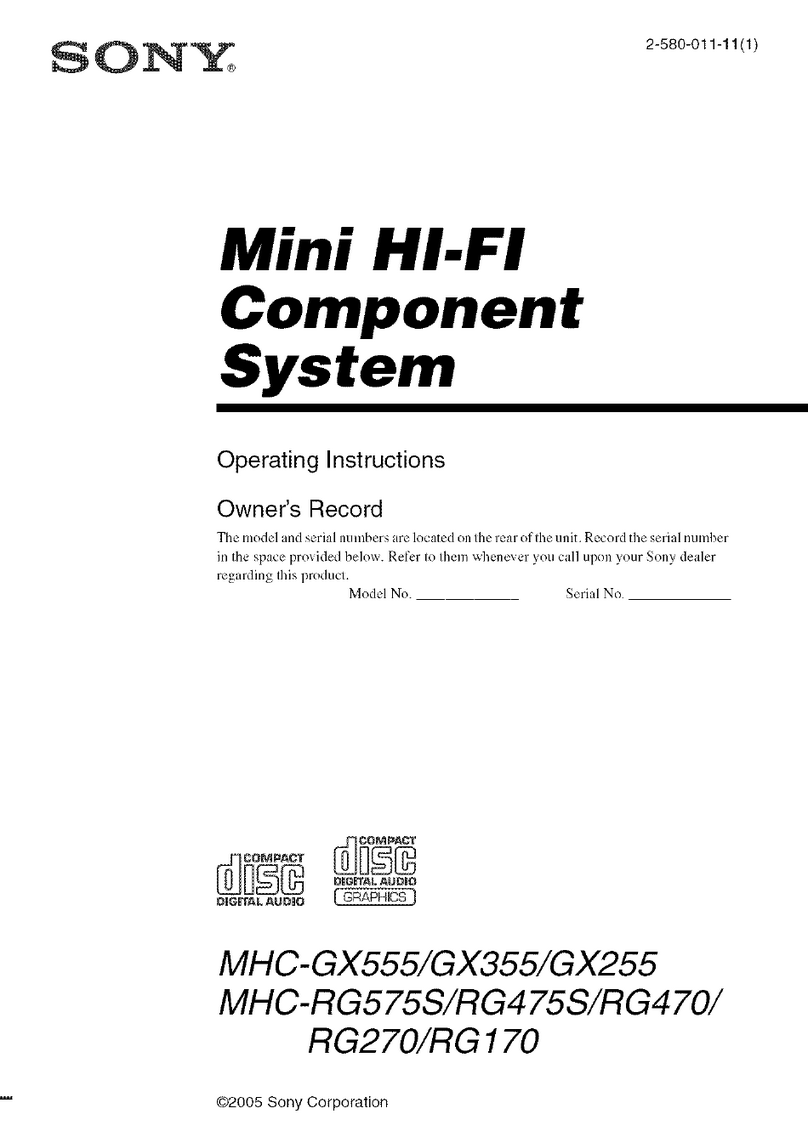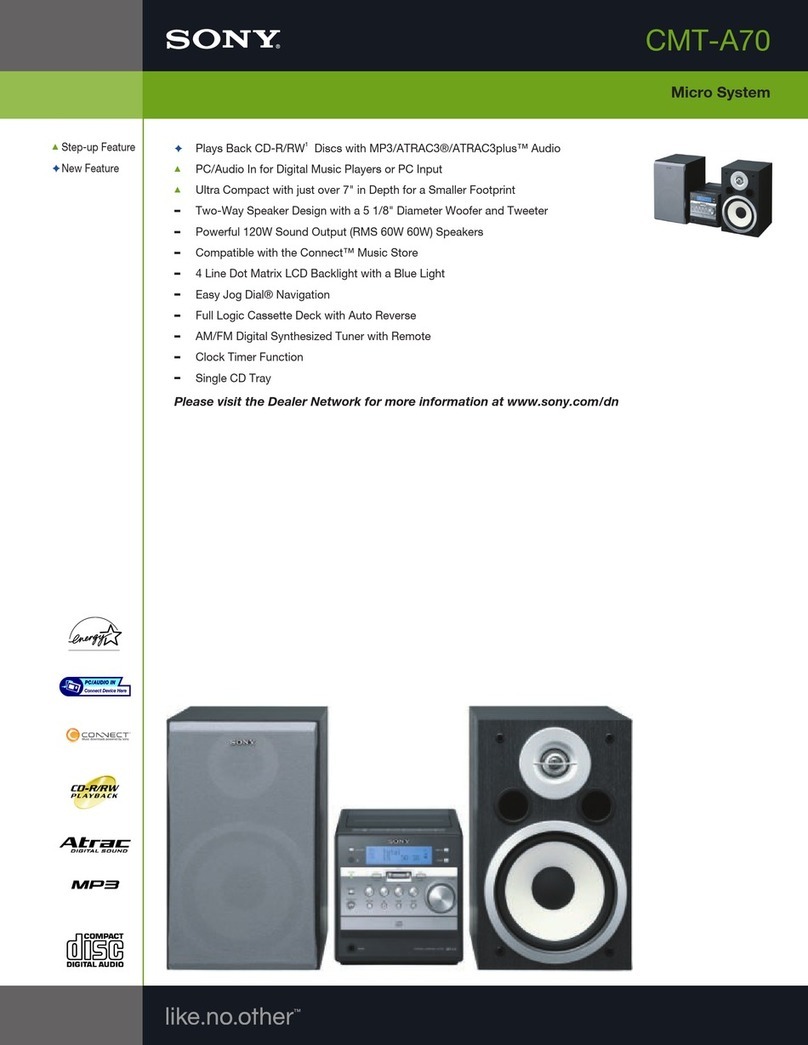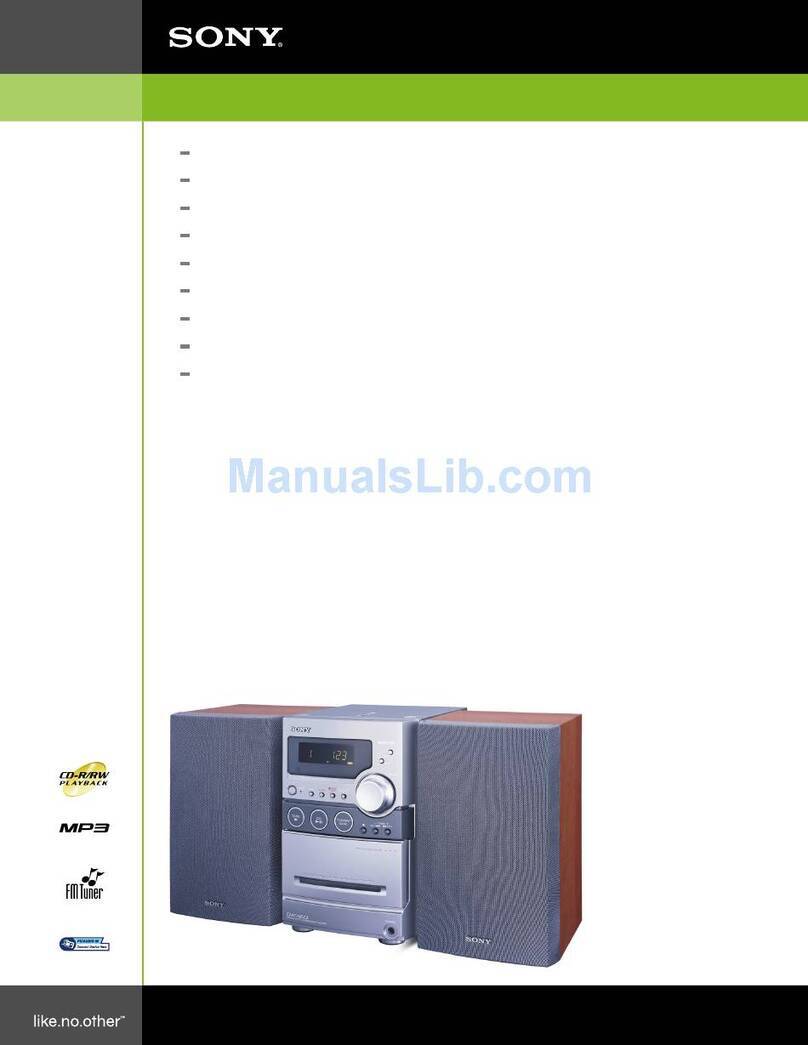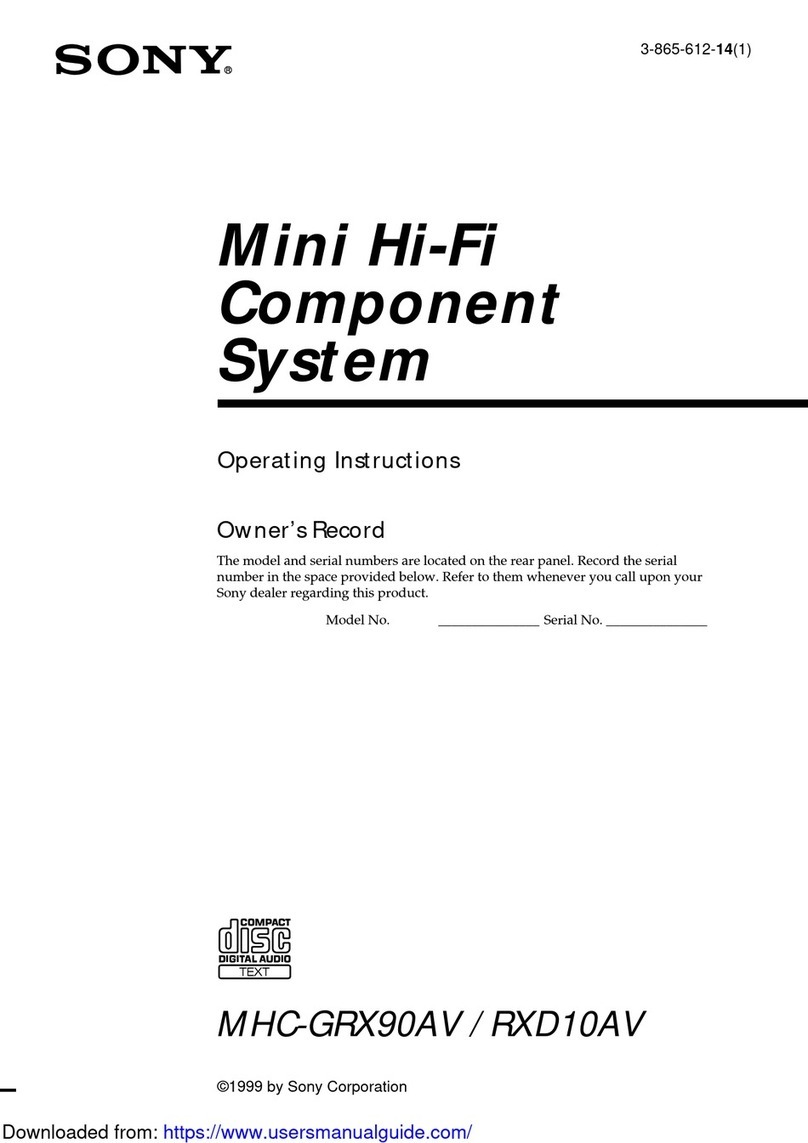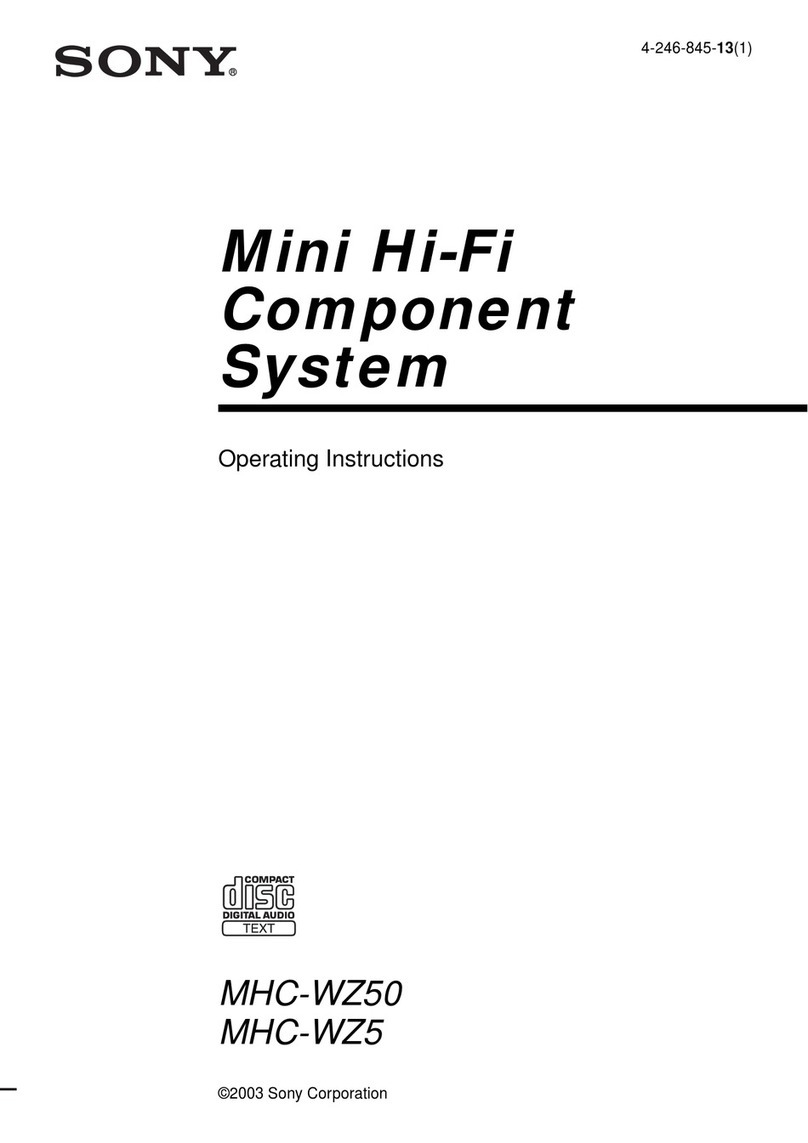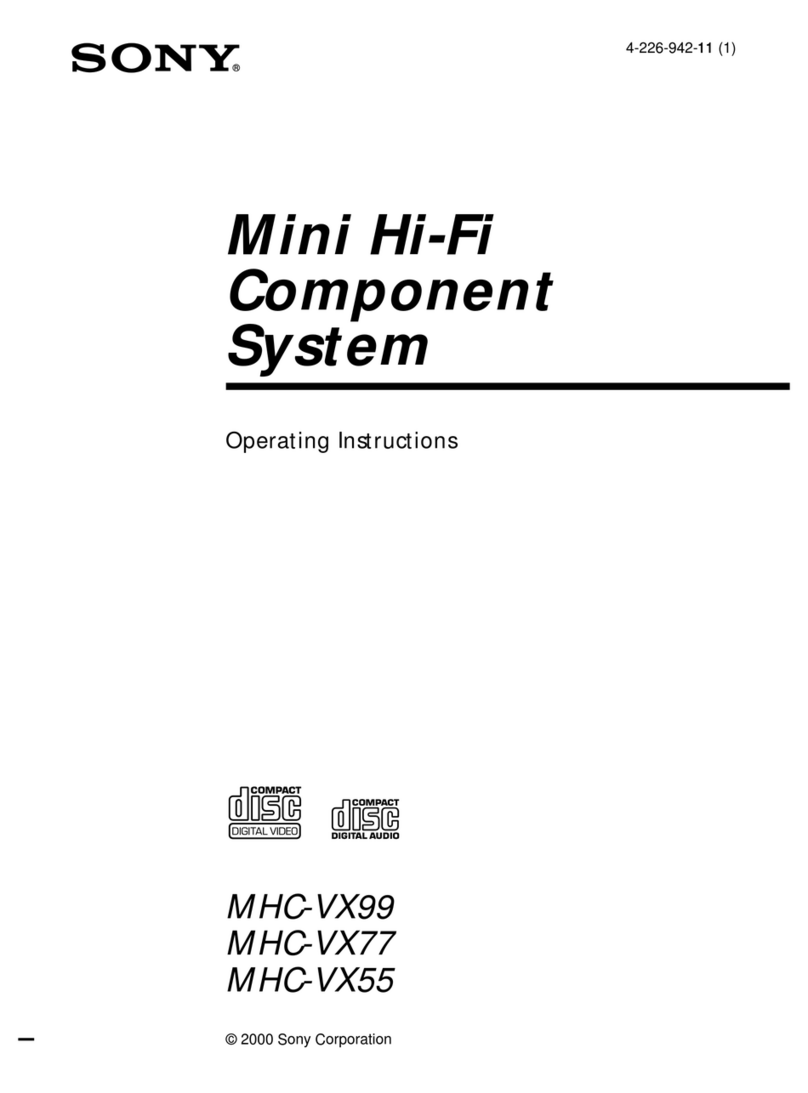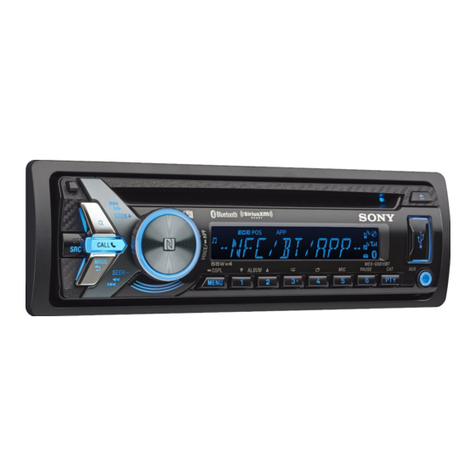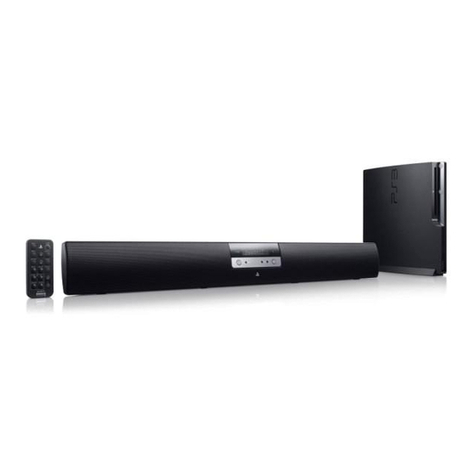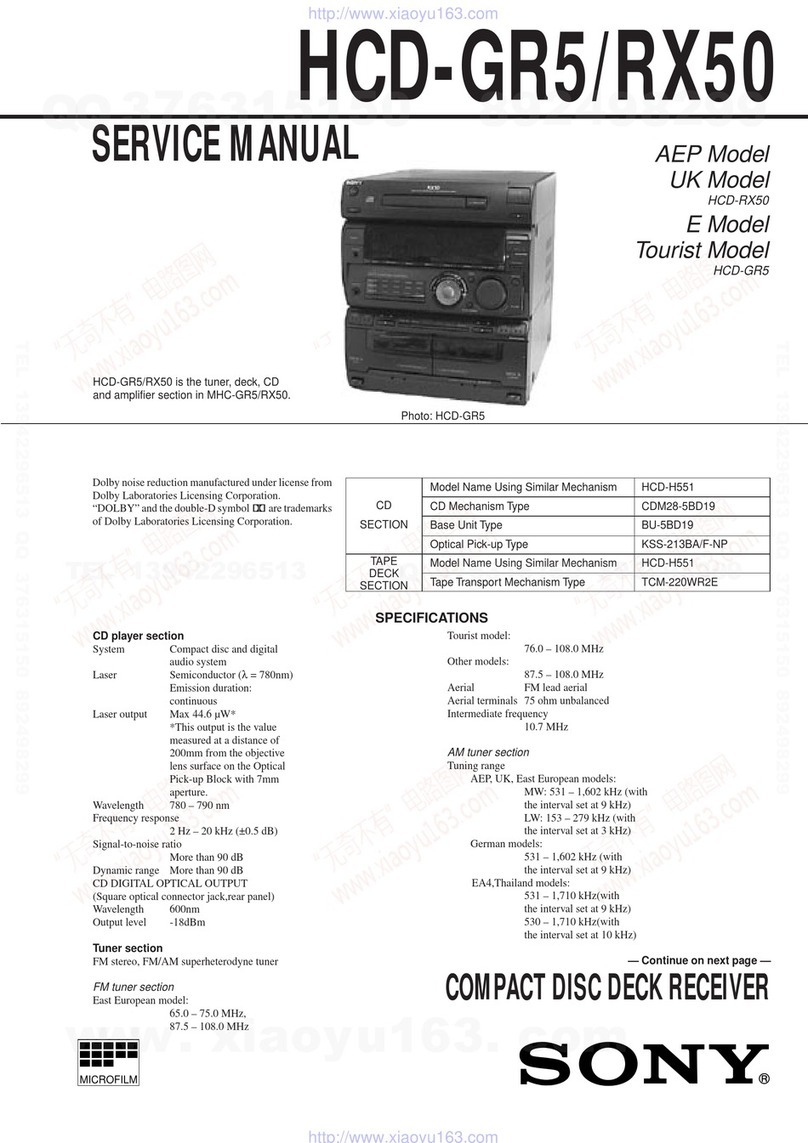
4
SAFETY-RELATED COMPONENT WARNING!!
COMPONENTS IDENTIFIED BY MARK 0OR DOTTED
LINE WITH MARK 0ON THE SCHEMATIC DIAGRAMS
AND IN THE PARTS LIST ARE CRITICAL TO SAFE
OPERATION. REPLACE THESE COMPONENTS WITH
SONY PARTS WHOSE PART NUMBERS APPEAR AS
SHOWN IN THIS MANUAL OR IN SUPPLEMENTS PUB-
LISHED BY SONY.
SECTION 1
SERVICING NOTES
This appliance is classified as a CLASS 1 LASER product. The
CLASS 1 LASER PRODUCT MARKING is located on the rear
exterior.
Laser component in this product is capable
of emitting radiation exceeding the limit for
Class 1.
CAUTION
Use of controls or adjustments or performance of procedures
other than those specified herein may result in hazardous radia-
tion exposure.
Notes on chip component replacement
•Never reuse a disconnected chip component.
•Notice that the minus side of a tantalum capacitor may be
damaged by heat.
Flexible Circuit Board Repairing
•Keep the temperature of soldering iron around 270˚C
during repairing.
•Do not touch the soldering iron on the same conductor of the
circuit board (within 3 times).
•Be careful not to apply force on the conductor when soldering
or unsoldering.
NOTES ON HANDLING THE OPTICAL PICK-UP
BLOCK OR BASE UNIT
The laser diode in the optical pick-up block may suffer electrostatic
break-down because of the potential difference generated by the
charged electrostatic load, etc. on clothing and the human body.
During repair, pay attention to electrostatic break-down and also
use the procedure in the printed matter which is included in the
repair parts.
The flexible board is easily damaged and should be handled with
care.
FOR CD
NOTES ON LASER DIODE EMISSION CHECK
The laser beam on this model is concentrated so as to be focused on
the disc reflective surface by the objective lens in the optical pick-
up block. Therefore, when checking the laser diode emission, ob-
serve from more than 30 cm away from the objective lens.
FOR MD
NOTES ON LASER DIODE EMISSION CHECK
Never look into the laser diode emission from right above when
checking it for adjustment. It is feared that you will lose your sight.
This caution
label is located
inside the unit.
TABLE OF CONTENTS
1. SERVICING NOTES ......................................................... 4
2. GENERAL.......................................................................... 12
3. DISASSEMBLY
3-1. Case ..................................................................................... 13
3-2. Front Panel Section ............................................................. 13
3-3. CD Mechanism Deck Section ............................................. 14
3-4. MD Mechanism Deck Block ............................................... 14
3-5. CD Base Unit ...................................................................... 15
3-6. Main Board ......................................................................... 15
3-7. Fitting Base (Guide) Assy, Bracket (Chassis) and
Magnet Assy ....................................................................... 16
3-8. Tray (Sub) ........................................................................... 16
3-9. Chassis (Mold B) Section, Stocker Section and
Slider (Selection) ................................................................ 17
3-10. Gears Installation .............................................................. 17
3-11. Slider (Selection) Installation ............................................ 18
3-12. Stocker Section Installation............................................... 18
3-13. Chassis (Mold B) Section Installation .............................. 19
3-14. MD Mechanism Deck Section .......................................... 19
3-15. BD (MD) Board ................................................................ 20
4. TEST MODE ...................................................................... 21
5. ELECTRICAL ADJUSTMENT.................................... 27
6. DIAGRAMS
6-1. Circuit Boards Location ...................................................... 39
6-2. Block Diagrams ................................................................... 41
6-3. Schematic Diagram –CD Section –.................................... 44
6-4. Printed Wiring Board –CD Section –................................. 45
6-5. Printed Wiring Board –MD Section –................................ 46
6-6. Schematic Diagram –MD Section (1/2) –.......................... 47
6-7. Schematic Diagram –MD Section (2/2) –.......................... 48
6-8. Schematic Diagram –Main Section (1/2) –........................ 49
6-9. Schematic Diagram –Main Section (2/2) –........................ 50
6-10. Printed Wiring Board –Main Section –............................ 51
6-11. Schematic Diagram –Digital Section –............................ 52
6-12. Printed Wiring Board –Digital Section –......................... 53
6-13. Schematic Diagram –Panel Section –.............................. 54
6-14. Printed Wiring Board –Panel Section –............................ 55
6-15. Schematic Diagram –CD Mechanism Section –.............. 56
6-16. Printed Wiring Board –CD Mechanism Section –........... 57
6-17. IC Block Diagrams ............................................................ 58
6-18. IC Pin Function ................................................................. 62
7. EXPLODED VIEW
7-1. Case, Chassis Section ......................................................... 71
7-2. Front Panel Section ............................................................. 72
7-3. CD Mechanism Deck Section-1.......................................... 73
7-4. CD Mechanism Deck Section-2.......................................... 74
7-5. CD Base Unit Section ......................................................... 75
7-6. MD Mechanism Section-1 .................................................. 76
7-7. MD Mechanism Section-2 .................................................. 77
8. ELECTRICAL PARTS LIST ........................................ 78
